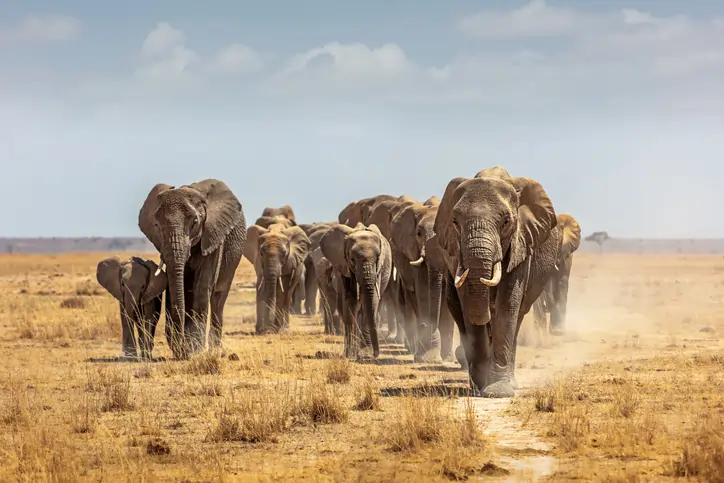
The role of AI in wildlife conservation and monitoring
Applications of AI in wildlife conservation
Remote Sensing and Satellite Imagery:
The utilization of satellite imagery and remote sensing technologies powered by AI has transformed the way we monitor wildlife and their habitats. AI algorithms can analyze vast amounts of data to detect changes in vegetation, track animal movements, and identify potential threats. This not only aids in monitoring endangered species but also provides valuable insights into the health of ecosystems.
Camera Traps and Image Recognition:
AI-powered image recognition has significantly enhanced camera trap efficiency. These traps capture thousands of images, and manually sorting through them can be overwhelming. AI algorithms can swiftly analyze images, identify species, and even estimate population sizes. This streamlines data analysis and enables quicker response to potential conservation issues.
Acoustic Monitoring:
The use of acoustic sensors combined with AI has proven effective in monitoring wildlife in areas that are challenging to access. AI algorithms can distinguish between different animal vocalizations, helping researchers track the presence of specific species, study mating behaviors, and identify potential threats to their populations.
Predictive Analytics for Habitat Conservation:
AI’s predictive analytics capabilities are instrumental in identifying and protecting critical habitats. By analyzing historical data and environmental variables, AI algorithms can predict potential changes in habitats, allowing conservationists to take proactive measures to mitigate threats.
Anti-Poaching Efforts:
One of the most critical applications of AI in wildlife conservation is its role in anti-poaching efforts. AI algorithms can analyze patterns in data from various sources, such as camera traps, drones, and ground sensors, to detect and predict illegal activities. This proactive approach enhances the effectiveness of anti-poaching initiatives.
Genetic Monitoring and Conservation:
AI is also making strides in genetic monitoring and conservation. Algorithms can analyze genetic data to track the diversity of populations, identify vulnerable individuals, and guide breeding programs to maintain genetic health. This technology is particularly valuable for endangered species with limited populations.
Analyzing the impact:
The integration of AI into wildlife conservation has already demonstrated significant positive impacts. By automating and accelerating data analysis, AI enables conservationists to make informed decisions swiftly. This increased efficiency is crucial in addressing time-sensitive issues such as illegal activities or sudden changes in ecosystems. Additionally, the precision of AI algorithms contributes to more accurate monitoring and assessment of wildlife populations and their habitats.
Moreover, AI’s ability to process vast amounts of data allows for a more holistic understanding of ecosystems. Conservationists can now analyze complex interactions between species, identify emerging threats, and develop targeted conservation strategies. This data-driven approach enhances the effectiveness of conservation efforts and helps allocate resources where they are most needed.
Keywords: AI in wildlife conservation, wildlife monitoring, remote sensing, image recognition, acoustic monitoring, predictive analytics, anti-poaching, genetic conservation, biodiversity, habitat protection.
Faqs:
Q1: How does AI contribute to wildlife conservation efforts?
A1: AI contributes to wildlife conservation by providing efficient tools for monitoring and protecting endangered species. Through applications like remote sensing, image recognition, and predictive analytics, AI aids in data analysis, enabling conservationists to make informed decisions and address conservation challenges more effectively.
Q2: What role does AI play in anti-poaching efforts?
A2: AI plays a crucial role in anti-poaching by analyzing data from various sources, such as camera traps and drones, to detect patterns indicative of illegal activities. This proactive approach allows authorities to intervene before significant harm is done to wildlife populations.
Q3: Can AI help in tracking animal movements and behaviors?
A3: Yes, AI, particularly through the analysis of data from camera traps and acoustic sensors, can track animal movements and behaviors. This information is valuable for understanding migration patterns, mating behaviors, and potential threats to wildlife.
Q4: How does AI contribute to habitat conservation?
A4: AI contributes to habitat conservation through predictive analytics. By analyzing historical data and environmental variables, AI algorithms can predict changes in habitats, allowing conservationists to take proactive measures to protect critical areas.
Q5: Is AI effective in genetic monitoring for wildlife conservation?
A5: Yes, AI is effective in genetic monitoring. By analyzing genetic data, AI algorithms help conservationists track population diversity, identify vulnerable individuals, and guide breeding programs to maintain the genetic health of endangered species.
Q6: What are the key benefits of using AI in wildlife conservation?
A6: The key benefits of using AI in wildlife conservation include increased efficiency in data analysis, quicker response to conservation challenges, enhanced precision in monitoring and assessment, and a more holistic understanding of ecosystems. These factors collectively contribute to more effective conservation strategies.
Q7: How can AI help in addressing climate change impacts on wildlife?
A7: AI can contribute to addressing climate change impacts by monitoring and analyzing changes in ecosystems. This includes tracking shifts in vegetation patterns, identifying areas vulnerable to climate change, and aiding in the development of adaptive strategies to mitigate the impact on wildlife.
Q8: Are there any ethical concerns associated with the use of AI in wildlife conservation?
A8: Ethical concerns may arise, such as issues related to privacy in monitoring activities, potential biases in AI algorithms, and the impact of AI on local communities. Conservationists must address these concerns through responsible and transparent AI deployment.
Q9: How can individuals contribute to AI-driven wildlife conservation efforts?
A9: Individuals can contribute by supporting organizations that use AI for wildlife conservation, participating in citizen science projects, spreading awareness about the importance of biodiversity, and adopting sustainable practices in their daily lives to reduce the impact on ecosystems.
Q10: What is the future outlook for the integration of AI in wildlife conservation?
A10: The future outlook is promising, with continued advancements in AI technology. The integration of AI is expected to become more widespread, offering even more sophisticated tools for monitoring, analysis, and decision-making in wildlife conservation. Collaboration between researchers, conservationists, and technologists will play a key role in shaping this future.
The integration of AI into wildlife conservation and monitoring represents a paradigm shift in our approach to protecting biodiversity. From remote sensing to genetic monitoring, AI offers innovative solutions to the challenges faced by conservationists. As technology continues to advance, the synergy between AI and conservation efforts is likely to become even more potent, providing hope for a sustainable future for our planet’s diverse ecosystems.


